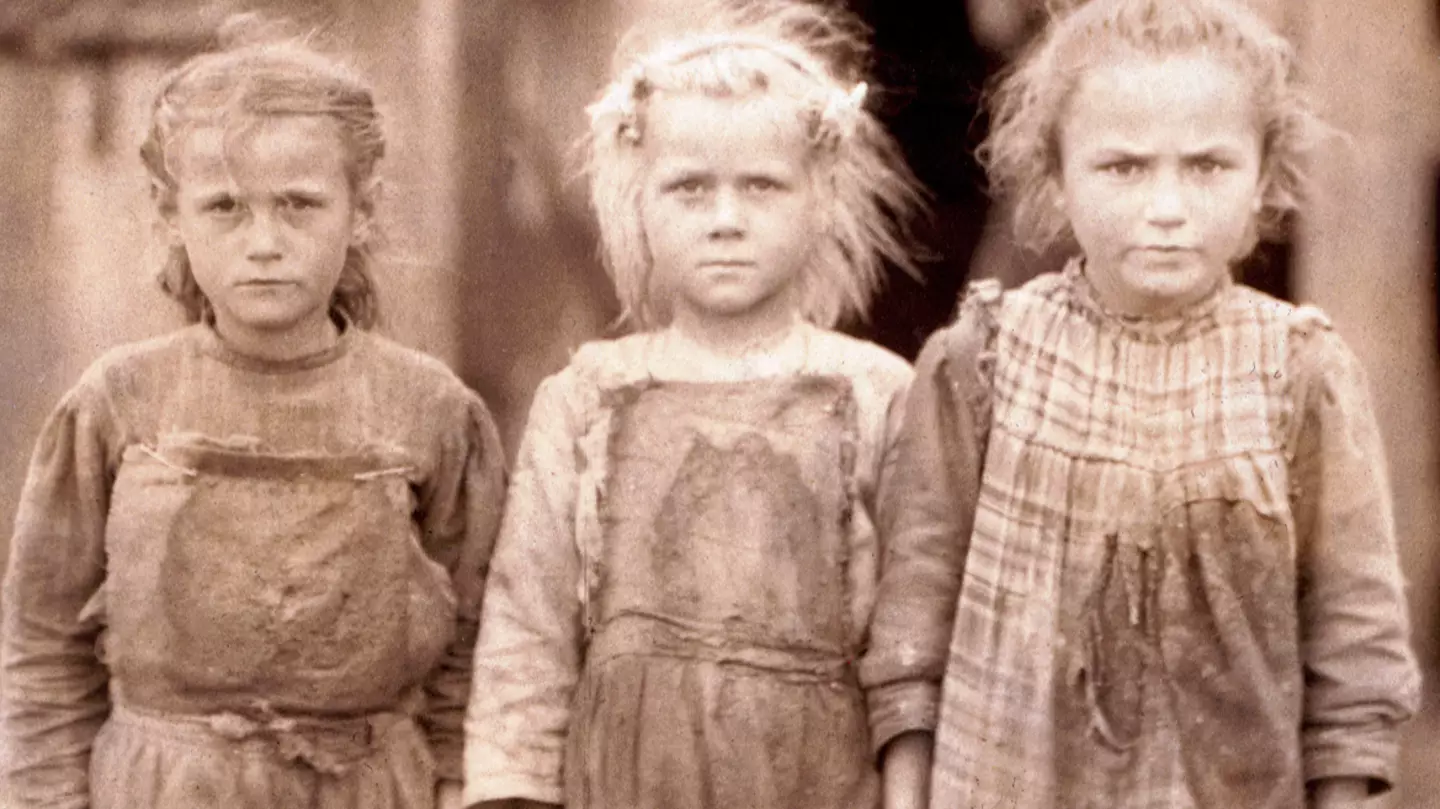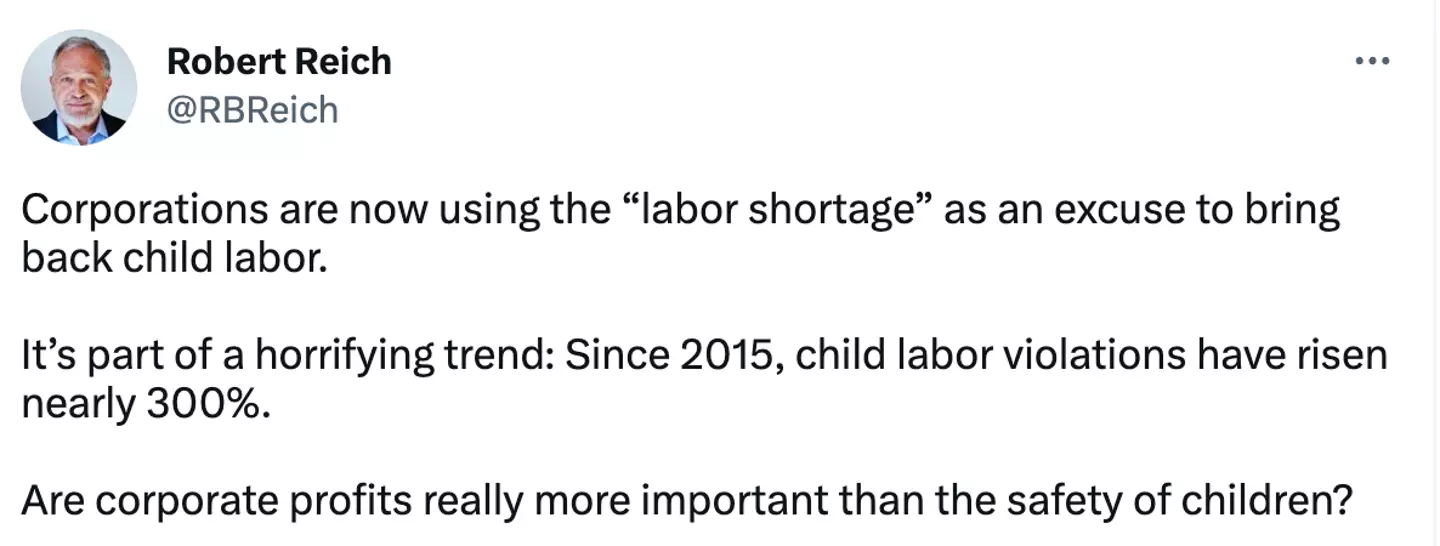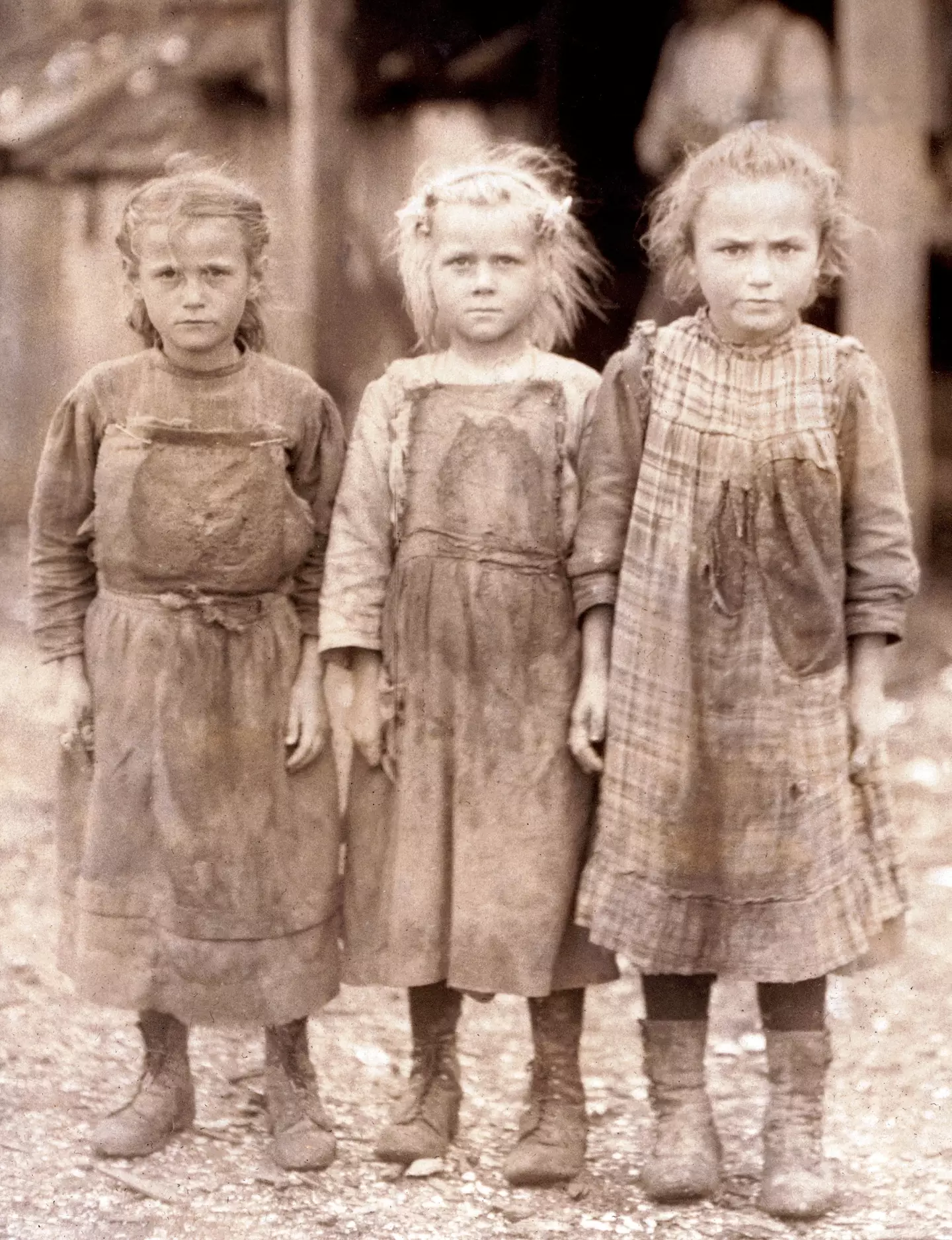
A photographer managed to capture the harsh reality of life before child labor laws and proved to be a key player in getting the work banned.
Far from picking up a paper route in your early teens, child labor in the US used to see kids taking part in jobs detrimental to their health and safety.
It wasn't until 1938 that the Fair Labor Standards Act, the most sweeping federal law around employing children, came about, but recently some states have taken steps to reverse some of these rulings.

In March, a bill reintroduced in the US House and Senate sought to allow 16 and 17-year-olds to work in the logging industry, taking part in certain mechanised operations under parental supervision.
Advert
And the news has sparked backlash, with many Americans now reflecting on the history of child labor laws and sharing the image, which showed life before it was banned.
Captured by photographer Lewis Hine, the image shows three young girls covered in dirt as they worked at the Maggioni Canning Company, which provides wild-harvested bushels and oysters.

Josie, 6, Bertha, 6, and Sophie, 10, all worked at the company at Port Royal, South Carolina.
Advert
Hine captured the photo while working as an an investigative photographer for the National Child Labor Committee (NCLC).
The images documented the working and living conditions of children between 1908 and 1924.
According to the Library of Congress, Hine went undercover to snap the photos, pretending to be a 'Bible salesman, postcard salesman, and industrial photographer making a record of factory machinery' to gain access to the scenes unfolding inside the businesses.
If he couldn't get inside, then he'd simply wait outside for the children to finish their shifts.

The US government archives explain how companies liked to hire children because they could pay them lower wages, and their small hands made them good at handling small parts and tools.
Advert
However, the work interfered with the children's health, including causing stunted growth and conditions such as tuberculosis and bronchitis for those who worked in coal mines or cotton mills.
They also faced more accidents due to the long hours and hard work, which caused physical and mental fatigue.
Speaking in 1908, Hine said: "There is work that profits children, and there is work that brings profit only to employers. The object of employing children is not to train them, but to get high profits from their work."
After Hine's pictures were made public, they soon attracted national attention and helped in the passing of child labor laws.
Advert
The National Child Labor Committee distributed the photographs as part of its publicity and educational efforts, and by 1920, the number of child laborers was cut to nearly half of what it had been a decade earlier.
The Fair Labor Standards Act of 1938 restricts working hours for children under the age of 16, and lists hazardous occupations too dangerous for young workers to perform.